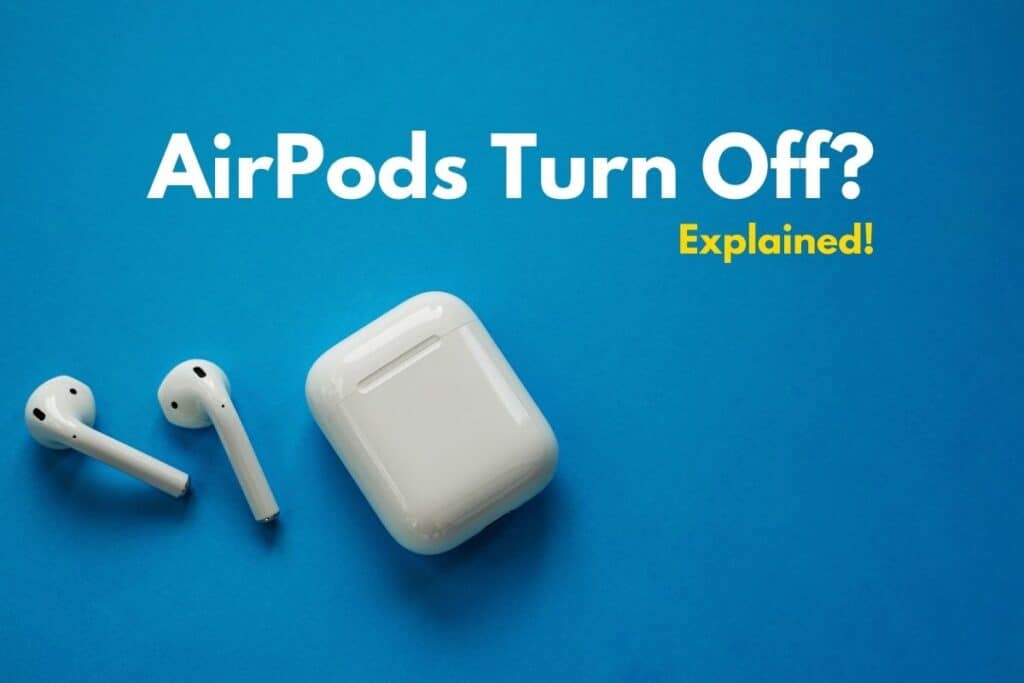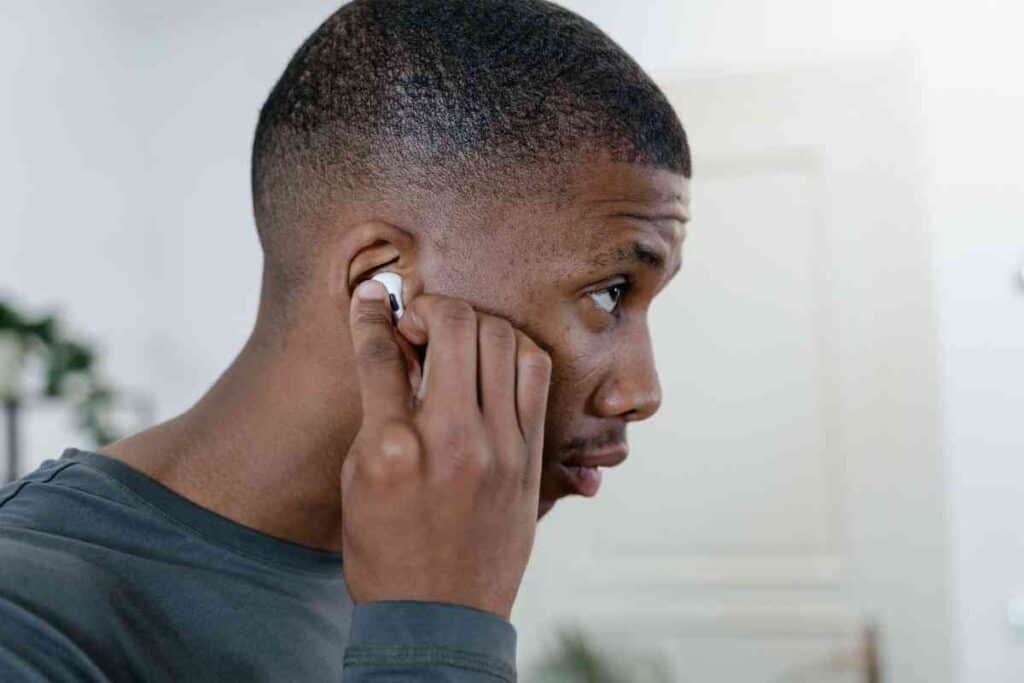Do AirPods Turn Off (Let me Explain…)
If you’re new to AirPods or haven’t experimented with them, there are a lot of features that could do with explaining. One of the most common questions I get is, “Do AirPods turn off?”

If you’re here, you’re obviously interested in tech. Well, guess what? I’ve got two pieces you’re going to love: “Can You Use Airpods With An Apple Watch Without An iPhone?” and “Do AirPods Need the Case to Work?” They’re perfect reads for all tech enthusiasts out there.
The short answer: yes and no. Not that helpful, I know. But Apple has designed its AirPods in such a way that AirPods don’t need to be turned off; they only really use their battery power when they’re actively being used. However, there is a power-saver mode that can help you make sure your AirPods are fresh when you need them most.
In this article, we’ll go into detail about the tech behind AirPods and discuss the power-saver mode to help you get the most of your Apple products. Let’s get started.
Turning Off Your AirPods
As I mentioned, it’s not possible, either via the hardware or the software, to power down AirPods. AirPods are designed to be ripe and ready for whenever you want to use them.
Though this might seem like AirPods’ inability to power down might lead to shorter battery life, the fact of the matter is that AirPods use hardly any battery power when they’re not being actively used.
One way that Apple designed AirPods to conserve battery power is to go into dormancy when they are in the charging case. When the AirPods are in the charging case, even when they’re not charging, they use virtually no battery. What’s better is that AirPods will charge themselves with whatever battery is stored in the charging case when you plug in your AirPods.
The conclusion? It’s always a good idea to return your AirPods to their charging case when you’re not using them.
Saving AirPod Battery: One At A Time
If you’re concerned about your AirPod battery, one tip often offered by veteran Podders is to use one AirPod at a time. By keeping one AirPod in your case, you can milk the most length possible out of your AirPods. This can be a great option if you know you’re going to be away from a charger for a long time (think: family camping trip?)
Saving AirPod Battery: Music Only
Making and receiving phone calls on AirPods use more battery than just listening to music. Why would this be, you may ask. When using AirPods to make phone calls, you’re using the mic actively. AirPods’ picking up and transferring audio to the person on the other end of your phone call costs battery, as does AirPods’ playing the audio to you from the other person.
If you want to save the battery on your AirPods, then, it’s natural that you refrain from phone calls. Just listen to music!
Saving AirPod Battery: Disconnect From Bluetooth
As I’ve covered in an earlier article, leaving your AirPods connected to Bluetooth will drain the battery faster than disconnecting your AirPods from Bluetooth. If you’re looking to return your AirPods to their case and don’t want to use another Bluetooth device, you should turn off the Bluetooth on your device.
If you want to use a different device, go into your settings and switch (read more about multiple Bluetooth devices here)!
AirPod Power-Saver Mode
If you’ve been checking the charge status on your AirPods and noticed that they’re dwindling in power quickly, you might have gone online and seen an AirPod power-saver mode.
The best way to keep your AirPods’ battery at its highest is to keep them in their charging case. With AirPod Max, however, there is a power-saver mode.
The good news for you is that you don’t need to worry about power-saver mode for AirPods. Power saving is automatic with AirPod Max. According to Apple’s recent clarification, setting down your Airpod Max device and leaving it dormant for five minutes will activate a low-power mode to help save the device’s battery.
Suppose you leave your device without using it or connecting it to the charging station for 72 hours. In that case, it will disconnect from Bluetooth and Find My AirPods automatically, further preserving battery life.

Are AirPods Always On?
The short answer is yes. Apple designed AirPods to be immediately available to Apple users; there’s no cumbersome on-off switch or device settings to fiddle with. As soon as you take your AirPods out of their charging case, they are ready to use and should automatically connect to Bluetooth.
The downside of the fact that AirPods are always on is that if you’re not careful you can drain the battery quickly. Get into the habit of returning your AirPods to the charging case and turning Bluetooth off on your device when you’re not using it.
Do AirPods Drain iPhone Battery?
We’ve already seen that keeping your AirPods connected to your iPhone will drain their battery. What about the other way around?
Having your iPhone connected to Bluetooth when the Bluetooth device isn’t doing anything has virtually no effect on battery life. Where Bluetooth does affect your battery is when actively streaming audio.
If your phone is running low on battery and you still want to listen to music, you should refrain from using Bluetooth to maximize battery life.
Conclusion: Do Airpods Turn Off?
In this article, I’ve briefly covered one of the most common questions new AirPods owners ask: do AirPods turn off.
As I hope you’ve seen, the question of whether or not AirPods turn off kind of misses the point. AirPods are designed intuitively so that they have as long a life as possible. There is no way, buttons or otherwise, to “turn off” your AirPods, but if you always return your AirPods to their case you should maximize battery life.
If you’re using AirPod Max, Apple built a low-power mode into the headphones to keep them full of battery when not playing music.
Thanks for reading. If you have more questions about your AirPods, The Gadget Buyer has you covered. I do an in-depth treatment of AirPods on my blog, including the question of whether AirPods work with any case. That’s all from me. Happy listening!